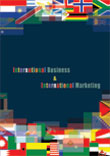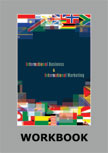Mercosur - Changing Course? |
ICMR HOME | Case Studies Collection
»
Business Environment Case Studies Please note: This case study was compiled from published sources, and is intended to be used as a basis for class discussion. It is not intended to illustrate either effective or ineffective handling of a management situation. Nor is it a primary information source. |
||||||||||
ExcerptsBackground
As ALALC could not make much multilateral progress in the 20 years of its existence, it was decided to replace it with ALADI, which facilitated bilateral agreements and joint actions between countries to foster closer economic ties...
Mercosur: An Incomplete Customs UnionAlthough Mercosur achieved remarkable progress in the first four years, there were several aspects of the FTA that were left unfinished. Several rules made at Mercosur to move towards integration remained on paper and were not incorporated into the national laws of the member states. After 1995, Brazil and Argentina in particular, showed increasing reluctance to work towards dismantling the remaining tariff and other non-tariff barriers and harmonizing macro economic policies, and instead resorted to rhetoric regarding the virtues of strengthening Mercosur. Integration was no longer a driving force among the major partners as a priority in their economic agenda. As a result the process of regional integration took a back seat...
|
Case Studies Links:-
Case Studies,
Short Case Studies,
Simplified Case Studies.
Other Case Studies:-
Multimedia Case Studies,
Cases in Other Languages.
Business Reports Link:-
Business Reports.
Books:-
Textbooks,
Work Books,
Case Study Volumes.



